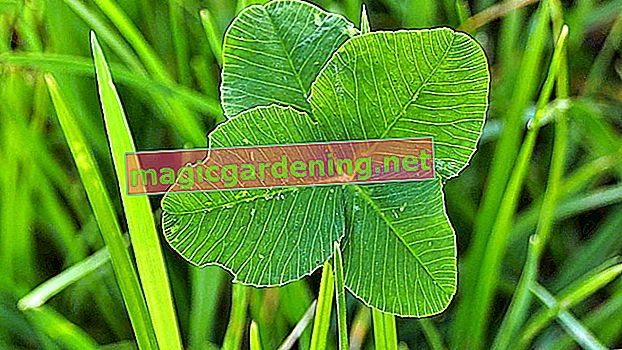
Reasons for the clover as a lawn substitute
Sometimes even tough types of lawn find it difficult to assert themselves in a certain area with dense growth. For example, the following reasons could be responsible for this:
- low nitrogen soil
- too much shade
- Waterlogging in the ground
also read
- Proper care for the clover in the garden
- Clover in the garden: information about the flowering period
- Growing clover in the garden
Although the clover does not tolerate waterlogging well, it can store its nitrogen from the atmosphere itself via the nodule bacteria attached to the roots. In addition, as a lawn substitute, the clover can usually be kept short with much less care than most types of grass. Another, ecologically valuable fact: The spherical flowers of red and white clover are a valuable source of nectar for butterflies, bumblebees and bees.
Sow and care for the clover correctly on the desired area
Before sowing, the intended area should be leveled as well as possible. However, avoid the temptation to simply spread the clover seeds by hand as this will almost always lead to very erratic results. It is better to mix the seeds with a fine-crumbly sowing soil and distribute it evenly on the prepared surface. The seeds should be covered with no more than 1 to 2 cm of soil and kept evenly moist during the germination phase. It is also important that you do not step onto the area before the plants have developed sufficiently.
Tips for a healthy clover lawn
So that you get a lawn substitute that is as attractive as possible, the seeds of particularly small-leaved clover varieties are available in specialist shops. In addition, clover and lawn seeds can be mixed to create a resilient clover lawn. Since the clover is relatively hard-wearing, but also a bit sensitive when subjected to heavy use, paths made of stepping stones or paving stones should help to protect the clover area.
Tips
Red and white clover are hardy and perennial, but rather short-lived. Therefore, the plants should be able to reproduce regularly by self-sowing and should not be kept too short. In most clover species, however, vegetative reproduction also takes place via runners.








